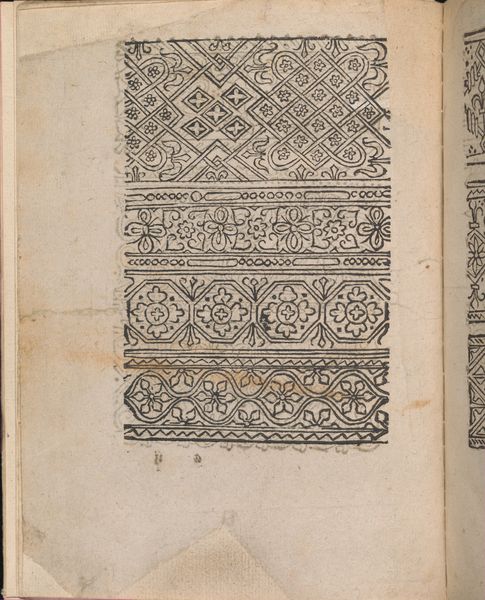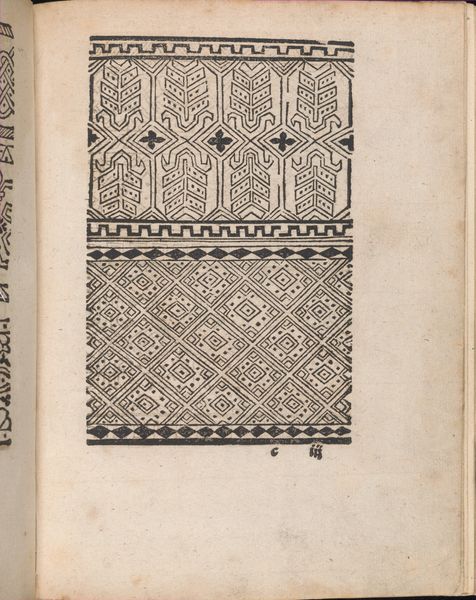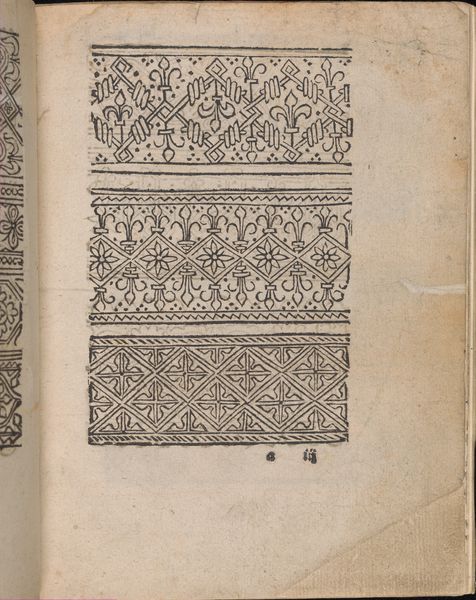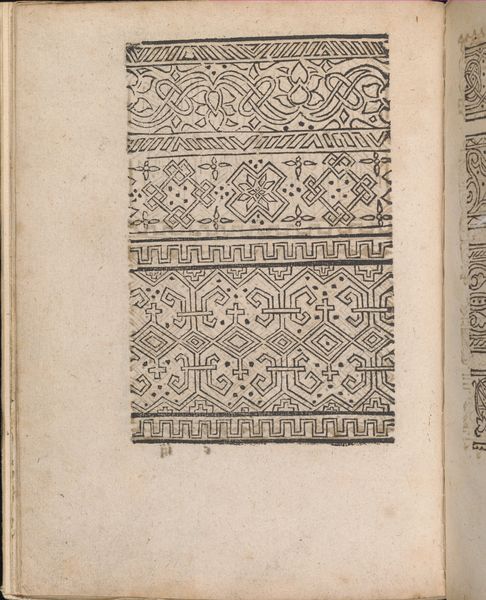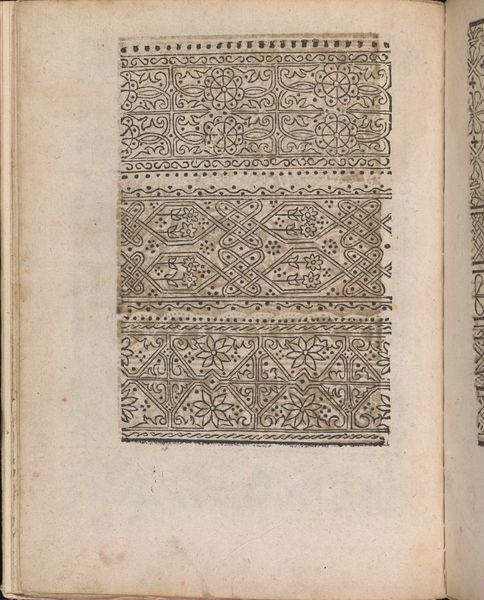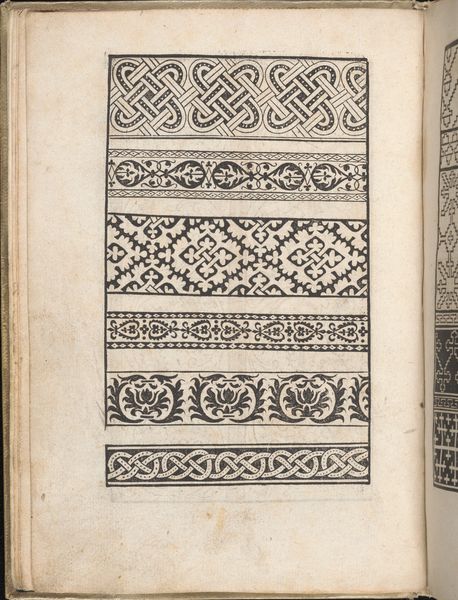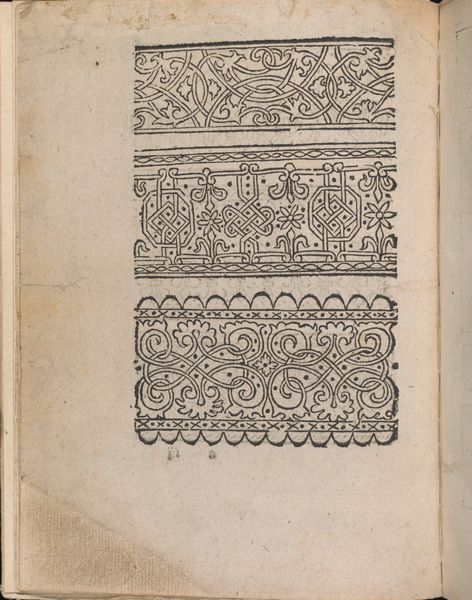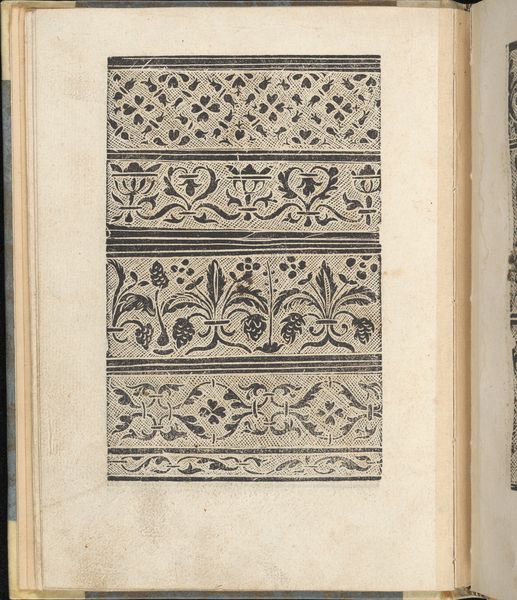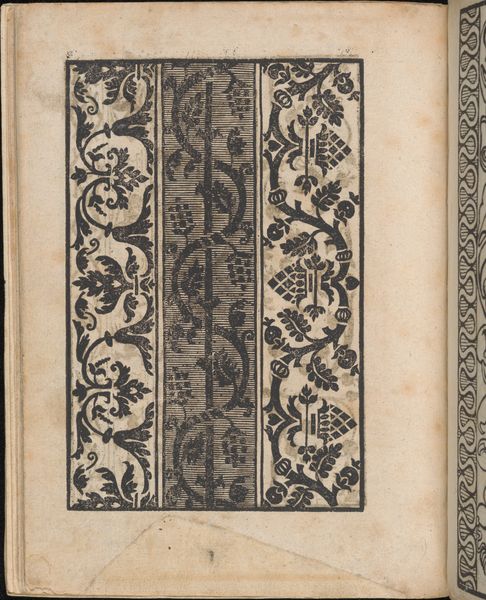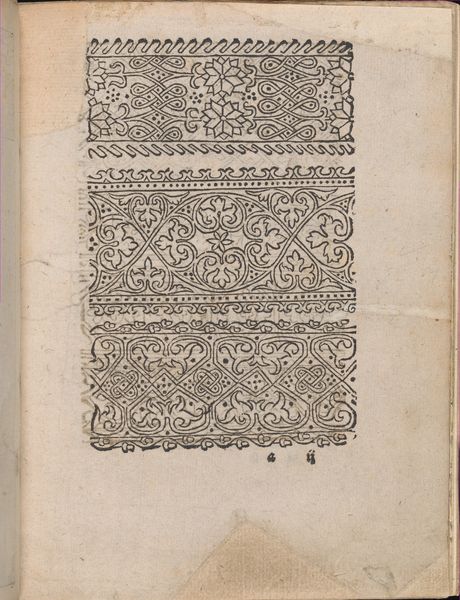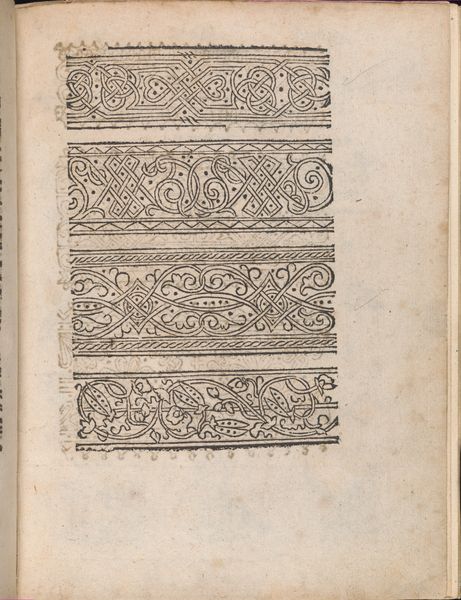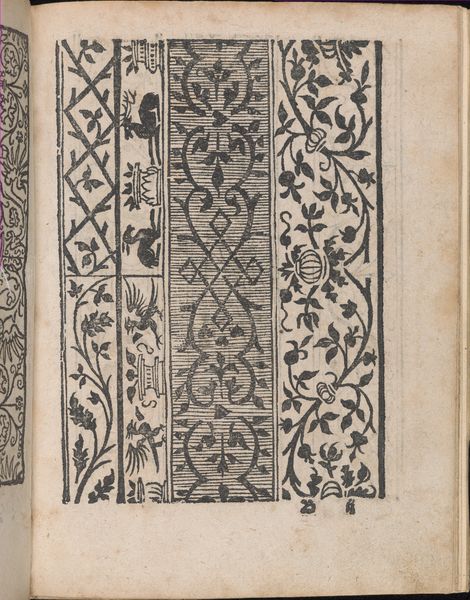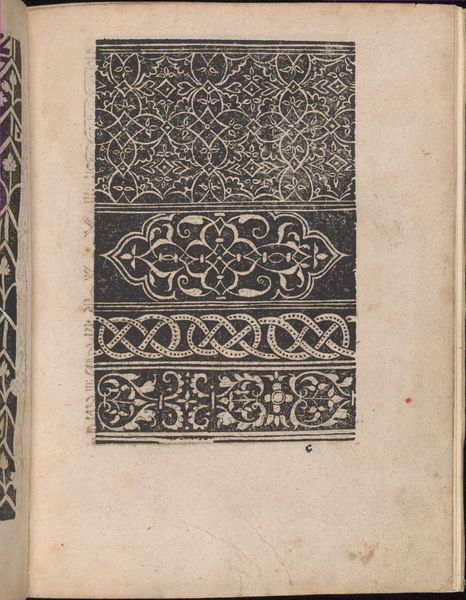
Modelbuch aller Art Nehens vn Stickens (Page 12v) 1535
0:00
0:00
drawing, ornament, print, paper, woodcut, engraving
#
drawing
#
ornament
#
medieval
# print
#
paper
#
geometric
#
woodcut
#
line
#
northern-renaissance
#
decorative-art
#
engraving
Dimensions: Overall: 7 5/16 x 5 5/16 in. (18.5 x 13.5 cm)
Copyright: Public Domain
Curator: This page, 12v from Christian Egenolff’s “Modelbuch aller Art Nehens vn Stickens,” created in 1535, presents a series of intricate border designs, executed through the printmaking techniques of woodcut and engraving. Editor: Wow, okay, so my immediate reaction is a strange calm. I mean, it’s black and white, repetitive… it’s like looking at proto-wallpaper, only with a real sense of dedicated craftsmanship. It has that beautiful faded parchment color as a background which definitely impacts the work. Curator: The work embodies the stylistic characteristics of the Northern Renaissance, specifically within decorative arts. The geometric patterns and line work place it within a historical context where ornamental designs held significant cultural and practical importance. This book was essentially a resource for embroidery and needlework. Editor: Absolutely. Thinking about those crafts... there’s a patience and mindfulness inherent in that kind of work, that this almost seems to capture. You know? And when I notice the imperfections within each row of designs—a slight wobble here, a blurred line there—I think that the presence of a real human hand that guided it elevates the entire piece. The work’s decorative elements contain spiritual crosses but resemble flowers simultaneously. Curator: The "Modelbuch" reflects the era's social fabric; such books were crucial tools for women's education and domestic craft. It also serves as a visual record of period aesthetics, suggesting ideals of beauty and order. Editor: Yeah, totally. When we approach these objects, we should resist easy interpretations and assumptions about female subservience or domestic roles being less important. Because what’s so potent, I think, is the evidence of dedication in producing these textiles, these embroideries. The artist leaves marks that show pride and expertise. And that’s pretty empowering. Curator: Precisely. The intersection of social practice and artistic creation complicates simple notions of domesticity. Thinking about these images intersectionally we realize we can view these borders as powerful expressions of cultural identity, creativity, and artistic agency for all artists working in different roles. Editor: Mmm, that gives me something to chew on, and you are so right! It takes us back to understanding that even in the “minor arts” – or what some deem as such – incredible intentionality can flourish, like here.
Comments
No comments
Be the first to comment and join the conversation on the ultimate creative platform.
